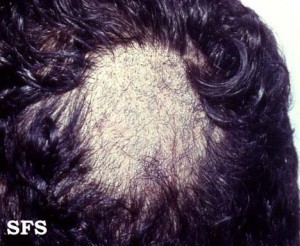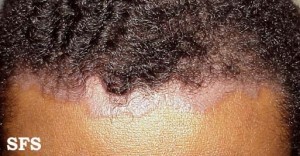Scalp Infections Causes, Types, Pictures
The scalp, like skin anywhere on the body, is prone to infections from many different types of infectious agents. Fungal and bacterial infections are by far the most common. The scalp is in fact more at risk of an infection at times. A combination of factors like unwashed hair, overactive oil glands, harsh hair treatments, perspiration and so on may increase the risk of infections as compared to the skin elsewhere on the body.
What are scalp infections?
A scalp infection is a condition where an infectious agent, like bacteria, viruses or fungi, infect the skin on the head. It does not apply to the skin on the face. Scalp infections are very common and usually do not pose a significant threat to health as it is superficial. However, scalp infections can have a host of adverse effects from the formation of sores to the loss of hair. This in turn can have psychosocial repercussions due to the aesthetic factor.
Causes of Scalp Infection
It is important to understand why these infections occur. Bacteria, fungi and viruses are abundant in and on the body as well as dispersed throughout the environment. The skin is a physical barrier that has a host of mechanisms to avoid an infection. Any derangement of the skin, exposure to pathogenic (disease-causing) organisms or impairment of the immune system may increase the chance of an infection.
However, many infections are caused by microbes that naturally occur on the skin. These microbes are not usually a problem for healthy skin but once there is a disturbance in the skin or immune system it can quickly cause an infection. The risk factors for a scalp infection includes:
- People with a weakened immune system like in poorly managed diabetes and HIV/AIDS.
- Exposure to people or pets who have an infection. Inanimate objects can also transmit some microbes.
- Pre-existing skin diseases affecting the scalp, like scalp psoriasis, scalp acne or seborrheic dermatitis.
- Excessive scratching of the scalp for any reason. This may include poor hygiene, hair extensions and nervous itching. Profuse perspiration, especially when the sweat cannot escape may cause skin irritation and itching.
- Irritation of the skin or an allergic reaction due to use of hair dyes, chemical hair straighteners and other products.
- Damage to the scalp from mechanical, chemical or electromagnetic injury. This may include heat damage and surgery to the scalp like with hair transplants.
- Long term use of corticosteroid creams or oral antibiotics.
Types of Scalp Infections
The types of scalp infections can be categorized according to the microbe that causes the infection. Broadly this refers to fungal, bacterial or viral scalp infections. A host of parasites like scabies or Demodex mites and head lice can cause scalp infestations. The most common of fungal, bacterial and viral infections are discussed in detail. However, there are many other types of scalp infections.
Fungal Scalp Infections
Fungi are one of the common microorganisms responsible for scalp problems. However, not all of these fungi actually infect the skin to trigger a range of scalp symptoms. Sometimes an overgrowth of fungi or the body’s reaction to its presence may cause inflammation.
There are two types of fungi – dermatophytes and yeasts. Dermatophytes have a predilection for skin and has specialized enzymes to digest skin protein (keratin). Yeasts are more often opportunistic when it infects the skin because it usually infects cavities like the mouth or vagina.
Tinea capitis
This is probably the most common type of fungal scalp infection. It caused by a number of different species of dermatophytes. These type of fungal infection causes a round ring-like rash and is therefore referred to as a scalp ringworm. It is usually very itchy and can lead to hair loss. Sometimes there may be pus-filled bumps (abscesses) on the scalp which are known as kerions.
Picture of tinea capitis (scalp ringworm)
Yeasts
Malassezia is a group of yeasts that are naturally found on the skin surface. These fungi do not usually cause a problem but under certain conditions it can both exacerbate and cause certain skin diseases. Therefore when it is responsible for infections, these are usually opportunistic infections. It is known to cause a type of folliculitis on the scalp and seborrheic dermatitis. Malassezia may also exacerbate non-infections skin diseases like scalp psoriasis.
Picture of seborrheic dermatitis on the scalp
Bacterial Scalp Infections
Bacteria are the most prevalent microbes on and in the body. It is also teeming in the environment. Some bacteria do naturally occur on the skin and referred to as the normal skin flora. Other bacteria may be harmless while some can cause very serious diseases. It is also possible for an otherwise harmless and naturally occurring skin bacteria to become pathogenic (disease-causing). These microbes can cause deep infections which could become life threatening at times.
Folliculitis
Although folliculitis refers to an infection of the hair follicles caused by any microbes, bacteria are the most common cause of scalp folliculitis. It can also be caused by fungi, viruses and even parasites like mites. Scalp folliculitis may be associated with scalp acne. Propionibacterium acnes and Staphylococcus aureus are among the more common bacteria responsible for scalp folliculitis. It can occur on an otherwise healthy scalp but is more likely to arise with injury or blockage of the follicles.
Picture of bacterial folliculitis
Picture of folliculitis declavans
Scalp Impetigo
Impetigo is a common bacterial infection of the superficial layers of the skin. Deeper infections that extend to the tissue under the skin are known as cellulitis. Streptococcus pyogenes or Staphylococcus aureus are the bacteria usually involved in impetigo. Overall the scalp is not a common site where impetigo occurs. It often occurs secondary to head lice, fungal infections of the scalp and other skin diseases on the scalp.
Viral Skin Infections
Viruses are not a common agent of scalp infections. Often when skin lesions do occur it is due to a systemic infection.
- Chickenpox is one of the more likely viral causes of scalp lesions in children and appears as tiny blisters.
- Herpes simplex virus (HSV) that may cause cold sores on the face can also cause folliculitis on the scalp.
- Herpes zoster or shingles may also involve the scalp and can be extremely painful.
 |
 |
Picture of shingles on the neck and scalp
Reference:
Pictures sourced from Dermatology Atlas Brazil (atlasdermatologico.com.br)








